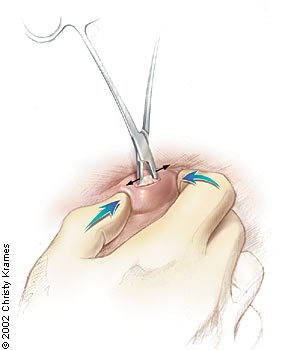
Taking Out a Cyst: Safe Methods, Risks & Recovery Tips
1. Introduction to Cyst Removal 1.1 What Is a Cyst? What is a cyst? It is...
Read More[vc_row][vc_column width=”1/1″][vc_column_text]Moles are common skin growths caused by clusters of pigmented cells. While most are harmless, some may change in size, color, or shape, prompting medical evaluation. Many people choose removal for cosmetic reasons or health concerns. Moles removal surgery offers a safe and effective solution when done by a professional. Understanding why and when to remove a mole is the first step toward healthier skin and peace of mind.[/vc_column_text][/vc_column][/vc_row][vc_row row_height_percent=”0″ overlay_alpha=”50″ gutter_size=”3″ column_width_percent=”100″ shift_y=”0″ z_index=”0″ css=”.vc_custom_1752330388812{margin-top: -50px !important;margin-bottom: -100px !important;}” shape_dividers=””][vc_column width=”1/1″][vc_custom_heading]
[/vc_custom_heading][/vc_column][/vc_row][vc_row row_height_percent=”0″ overlay_alpha=”50″ gutter_size=”3″ column_width_percent=”100″ shift_y=”0″ z_index=”0″ css=”.vc_custom_1752330358872{margin-top: 100px !important;margin-bottom: 100px !important;}” shape_dividers=””][vc_column width=”1/1″][vc_single_image media=”84895″ media_width_percent=”58″ alignment=”center”][/vc_column][/vc_row][vc_row row_height_percent=”0″ overlay_alpha=”50″ gutter_size=”3″ column_width_percent=”100″ shift_y=”0″ z_index=”0″ css=”.vc_custom_1752330485822{margin-top: -100px !important;margin-bottom: -50px !important;}” shape_dividers=””][vc_column width=”1/1″][vc_column_text]
Understanding the type of mole helps determine if moles removal surgery is necessary for medical or cosmetic reasons.[/vc_column_text][/vc_column][/vc_row][vc_row row_height_percent=”0″ overlay_alpha=”50″ gutter_size=”3″ column_width_percent=”100″ shift_y=”0″ z_index=”0″ css=”.vc_custom_1752327900630{margin-top: -80px !important;margin-bottom: -80px !important;}”][vc_column width=”1/1″][vc_custom_heading]
[/vc_custom_heading][/vc_column][/vc_row][vc_row][vc_column width=”1/1″][vc_single_image media=”84896″ media_width_percent=”63″ alignment=”center”][/vc_column][/vc_row][vc_row row_height_percent=”0″ overlay_alpha=”50″ gutter_size=”3″ column_width_percent=”100″ shift_y=”0″ z_index=”0″ css=”.vc_custom_1752326648841{margin-top: -50px !important;margin-bottom: -50px !important;}”][vc_column width=”1/1″][vc_column_text]Before undergoing any removal, dermatologists assess the mole’s characteristics—color, border, symmetry, and evolution. A biopsy may be conducted to check for abnormal or cancerous cells. This ensures safe and necessary intervention. Accurate diagnosis is critical for tailoring the right procedure and reducing risks. Clinics that specialize in services like mole removal in Newcastle often use digital tools for detailed mole mapping.[/vc_column_text][/vc_column][/vc_row][vc_row row_height_percent=”0″ overlay_alpha=”50″ gutter_size=”3″ column_width_percent=”100″ shift_y=”0″ z_index=”0″ css=”.vc_custom_1752327920304{margin-top: -80px !important;margin-bottom: -80px !important;}”][vc_column width=”1/1″][vc_custom_heading]
[/vc_custom_heading][/vc_column][/vc_row][vc_row][vc_column width=”1/1″][vc_single_image media=”84897″ media_width_percent=”60″ alignment=”center”][/vc_column][/vc_row][vc_row row_height_percent=”0″ overlay_alpha=”50″ gutter_size=”3″ column_width_percent=”100″ shift_y=”0″ z_index=”0″ css=”.vc_custom_1752326556253{margin-top: -50px !important;margin-bottom: -50px !important;}”][vc_column width=”1/1″][vc_column_text]
[/vc_column_text][/vc_column][/vc_row][vc_row row_height_percent=”0″ overlay_alpha=”50″ gutter_size=”3″ column_width_percent=”100″ shift_y=”0″ z_index=”0″ css=”.vc_custom_1752327654252{margin-top: -80px !important;margin-bottom: -80px !important;}”][vc_column width=”1/1″][vc_custom_heading]
[/vc_custom_heading][/vc_column][/vc_row][vc_row][vc_column width=”1/1″][vc_column_text]Beyond aesthetics, moles removal surgery can protect your health by eliminating potentially cancerous moles early. It improves appearance, boosts confidence, and allows for early detection of skin issues. Many patients also feel a psychological benefit from removing noticeable or bothersome moles. Trusted clinics offering mole removal in Newcastle highlight long-term benefits beyond just cosmetic results.[/vc_column_text][/vc_column][/vc_row][vc_row row_height_percent=”0″ overlay_alpha=”50″ gutter_size=”3″ column_width_percent=”100″ shift_y=”0″ z_index=”0″ css=”.vc_custom_1752328560937{margin-top: -50px !important;margin-bottom: -50px !important;}”][vc_column width=”1/1″][vc_custom_heading]
[/vc_custom_heading][/vc_column][/vc_row][vc_row row_height_percent=”0″ overlay_alpha=”50″ gutter_size=”3″ column_width_percent=”100″ shift_y=”0″ z_index=”0″ css=”.vc_custom_1752328849327{margin-top: -90px !important;margin-bottom: -90px !important;}”][vc_column width=”1/1″][vc_column_text css=”.vc_custom_1752329248072{margin-bottom: 30px !important;}”]
Reputable providers, such as those offering mole removal in Newcastle Upon Tyne, take these factors seriously.[/vc_column_text][/vc_column][/vc_row][vc_row row_height_percent=”0″ overlay_alpha=”50″ gutter_size=”3″ column_width_percent=”100″ shift_y=”0″ z_index=”0″ css=”.vc_custom_1752329475796{margin-top: -10px !important;margin-bottom: -50px !important;}”][vc_column width=”1/1″][vc_custom_heading]
[/vc_custom_heading][/vc_column][/vc_row][vc_row row_height_percent=”0″ overlay_alpha=”50″ gutter_size=”3″ column_width_percent=”100″ shift_y=”0″ z_index=”0″ css=”.vc_custom_1752328770713{margin-top: -70px !important;margin-bottom: -70px !important;}”][vc_column width=”1/1″][vc_column_text]The cost of moles removal surgery varies depending on the method, the size and number of moles, and the clinic’s location. On average, it may range from £500 to £15,00 per mole in the United Kingdom. Additional charges might apply for lab tests or cosmetic enhancements. While cosmetic removals are usually not covered by insurance, suspicious or cancerous mole removals may be partially reimbursed.
But at Eldon Aesthetics it start’s from £299. [/vc_column_text][/vc_column][/vc_row][vc_row row_height_percent=”0″ overlay_alpha=”50″ gutter_size=”3″ column_width_percent=”100″ shift_y=”0″ z_index=”0″ css=”.vc_custom_1752327560194{margin-top: -80px !important;margin-bottom: -80px !important;}”][vc_column width=”1/1″][vc_custom_heading]
[/vc_custom_heading][/vc_column][/vc_row][vc_row][vc_column width=”1/1″][vc_column_text]Choosing the right specialist is essential for effective and safe mole removal. Look for board-certified dermatologists or surgeons with experience in mole excision. Ask for before-and-after photos, read reviews, and confirm the clinic uses updated techniques. Reputable providers of mole removal often offer consultations to discuss individual cases and explain procedures in detail.[/vc_column_text][/vc_column][/vc_row][vc_row row_height_percent=”0″ overlay_alpha=”50″ gutter_size=”3″ column_width_percent=”100″ shift_y=”0″ z_index=”0″ css=”.vc_custom_1752327578392{margin-top: -80px !important;margin-bottom: -80px !important;}”][vc_column width=”1/1″][vc_custom_heading]
[/vc_custom_heading][/vc_column][/vc_row][vc_row][vc_column width=”1/1″][vc_single_image media=”84898″ media_width_percent=”58″ alignment=”center”][/vc_column][/vc_row][vc_row row_height_percent=”0″ overlay_alpha=”50″ gutter_size=”3″ column_width_percent=”100″ shift_y=”0″ z_index=”0″ css=”.vc_custom_1752326390543{margin-top: -50px !important;margin-bottom: -50px !important;}”][vc_column width=”1/1″][vc_column_text]
[/vc_column_text][/vc_column][/vc_row][vc_row row_height_percent=”0″ overlay_alpha=”50″ gutter_size=”3″ column_width_percent=”100″ shift_y=”0″ z_index=”0″ css=”.vc_custom_1752327512904{margin-top: -80px !important;margin-bottom: -80px !important;}”][vc_column width=”1/1″][vc_custom_heading]
[/vc_custom_heading][/vc_column][/vc_row][vc_row][vc_column width=”1/1″][vc_single_image media=”84900″ media_width_percent=”65″ alignment=”center”][/vc_column][/vc_row][vc_row row_height_percent=”0″ overlay_alpha=”50″ gutter_size=”3″ column_width_percent=”100″ shift_y=”0″ z_index=”0″ css=”.vc_custom_1752327769932{margin-top: -60px !important;margin-bottom: -60px !important;}”][vc_column width=”1/1″][vc_column_text]After surgery, it’s important to keep the area clean and avoid sun exposure. Your doctor may prescribe antibiotic ointment or mild pain relief if necessary. Avoid picking at scabs or applying harsh skincare products. Healing usually takes 1 to 2 weeks, with full skin regeneration in a few months. Clinics known for mole removal often provide written aftercare instructions for smoother recovery.[/vc_column_text][/vc_column][/vc_row][vc_row row_height_percent=”0″ overlay_alpha=”50″ gutter_size=”3″ column_width_percent=”100″ shift_y=”0″ z_index=”0″ css=”.vc_custom_1752327464819{margin-top: -80px !important;margin-bottom: -80px !important;}”][vc_column width=”1/1″][vc_custom_heading]
[/vc_custom_heading][/vc_column][/vc_row][vc_row][vc_column width=”1/1″][vc_column_text]Scarring is possible, especially with surgical excision, but it can be minimized with proper care. Silicone gel sheets, scar creams, and sun protection can aid healing. Over time, scars fade and become less noticeable. Follow-up visits may include laser treatment or topical applications to improve the skin’s appearance. Always consult your dermatologist before applying any over-the-counter products.[/vc_column_text][/vc_column][/vc_row][vc_row row_height_percent=”0″ overlay_alpha=”50″ gutter_size=”3″ column_width_percent=”100″ shift_y=”0″ z_index=”0″ css=”.vc_custom_1752327418534{margin-top: -80px !important;margin-bottom: -80px !important;}”][vc_column width=”1/1″][vc_custom_heading]
[/vc_custom_heading][/vc_column][/vc_row][vc_row][vc_column width=”1/1″][vc_column_text]
[/vc_column_text][/vc_column][/vc_row][vc_row row_height_percent=”0″ overlay_alpha=”50″ gutter_size=”3″ column_width_percent=”100″ shift_y=”0″ z_index=”0″ css=”.vc_custom_1752327329151{margin-top: -80px !important;margin-bottom: -80px !important;}”][vc_column width=”1/1″][vc_custom_heading]
[/vc_custom_heading][/vc_column][/vc_row][vc_row][vc_column width=”1/1″][vc_column_text]Moles removal surgery is a reliable and safe option for addressing both cosmetic and medical concerns. With various techniques available, it’s important to choose the right specialist and method suited to your needs. Understanding the risks, benefits, cost, and aftercare helps you make an informed decision. Whether you’re considering mole removal or anywhere else, always prioritize health and safety.[/vc_column_text][/vc_column][/vc_row][vc_row row_height_percent=”0″ overlay_alpha=”50″ gutter_size=”3″ column_width_percent=”100″ shift_y=”0″ z_index=”0″ css=”.vc_custom_1752327228018{margin-top: -100px !important;margin-bottom: -100px !important;border-top-width: -50px !important;border-bottom-width: -50px !important;padding-top: -50px !important;padding-bottom: -50px !important;}”][vc_column column_width_percent=”100″ gutter_size=”3″ overlay_alpha=”50″ shift_x=”0″ shift_y=”0″ shift_y_down=”0″ z_index=”0″ medium_width=”0″ mobile_width=”0″ width=”1/1″ css=”.vc_custom_1752327091959{padding-top: -50px !important;padding-bottom: -50px !important;}”][vc_custom_heading]
[/vc_custom_heading][/vc_column][/vc_row][vc_row row_height_percent=”0″ overlay_alpha=”50″ gutter_size=”3″ column_width_percent=”100″ shift_y=”0″ z_index=”0″ css=”.vc_custom_1752327392794{margin-top: -80px !important;margin-bottom: -80px !important;}”][vc_column width=”1/1″][vc_column_text]
Not typically. Local anesthesia is used, so you won’t feel pain during the procedure.
Initial healing takes 7–14 days; full recovery varies based on the procedure.
It’s not recommended. DIY methods can lead to infection or scarring.
Only if the mole is medically necessary to remove (e.g., suspected of being cancerous).
Rarely. If the entire mole isn’t removed, it may regrow and require follow-up.[/vc_column_text][/vc_column][/vc_row]

1. Introduction to Cyst Removal 1.1 What Is a Cyst? What is a cyst? It is...
Read More

Eldon Aesthetics Newcastle, offer only the most effective dermal fillers. All of our dermal fillers...
Read More